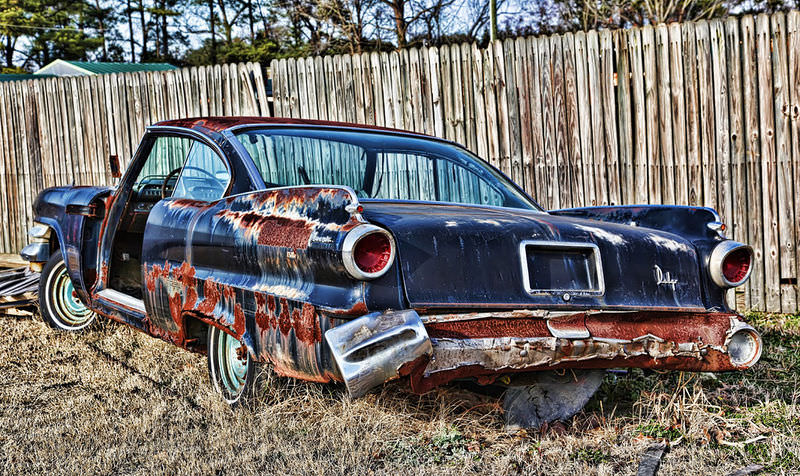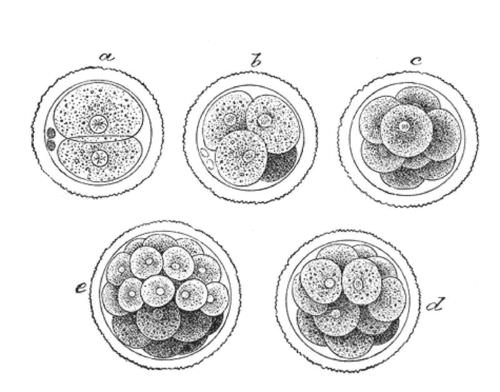2.19 Cell Division
2.19 Cell Division
Do cells get worn out?
Yes, just like this car, cells cannot last forever. Cells do eventually wear out. At that point, they need to be replaced. This is one reason that your cells divide. New cells that result after cells divide are also used for growth and to repair cuts.
Why Cells Divide
Imagine the first stages of life. In humans and other animals, a sperm fertilizes an egg, forming the first cell. But humans are made up of trillions of cells, so where do the new cells come from? Remember that according to the cell theory, all cells come from existing cells. Once a sperm and egg cell unite and the first cell, called a zygote, forms, an entire baby will develop. And each cell in that baby will be genetically identical, meaning that each cell will have exactly the same DNA.
How does a new life go from one cell to so many? The cell divides in half, creating two cells. Then those two cells divide, for a total of four cells. The new cells continue to divide and divide. One cell becomes two, then four, then eight, and so on (Figure below). This continual process of a cell dividing and creating two new cells is known as cell division. Cell division is part of a cycle of cellular growth and division known as the cell cycle—cells must grow before they divide. The cell cycle describes the "life" of a eukayrotic cell. In addition to cell division, the cell cycle includes the division of the nucleus and the cytoplasm.
Most cell division produces genetically identical cells, meaning they have the same DNA. The process of mitosis, which specifically is the division of the nucleus, ensures that each cell has the same DNA. During mitosis, the chromosomes equally separate, thus making sure each nucleus in each resulting cell after cell division is genetically identical.
A special form of cell division, called meiosis, produces cells with half as much DNA as the parent cell. These cells are used for reproduction. In prokaryotic organisms, cell division is how those organisms reproduce.
Cells divide repeatedly to produce an embryo. Previously the one-celled zygote (the first cell of a new organism) divided to make two cells (a). Each of the two cells divides to yield four cells (b), then the four cells divide to make eight cells (c), and so on. Through cell division, an entire embryo forms from one initial cell.
Besides the development of a baby, there are many other reasons that cell division is necessary for life:
- To grow and develop, you must form new cells. Imagine how often your cells must divide during a growth spurt. Growing just an inch requires countless cell divisions. Your body must produce new bone cells, new skin cells, new cells in your blood vessels and so on.
- Cell division is also necessary to repair damaged cells. Imagine you cut your finger. After the scab forms, it will eventually disappear and new skin cells will grow to repair the wound. Where do these cells come from? Some of your existing skin cells divide and produce new cells.
- Your cells can also simply wear out. Over time you must replace old and worn-out cells. Cell division is essential to this process.
Summary
- Cells must divide repeatedly for an embryo to develop or for you to grow.
- Cells also divide in order to replace damaged or worn-out cells.
Explore More
Use the resources below to answer the questions that follow.
Explore More I
- Why Must A Cell Divide at http://plaza.ufl.edu/alallen/pgl/modules/rio/stingarees/module/why.html
- What limits the size a cell can become? Be as specific as you can.
- If you double the size of a cube, how does this affect the surface to volume ratio?
Explore More II
- Surface Area to Volume Ratios at http://www.youtube.com/watch?v=xuG4ZZ1GbzI (2:45)
- Does the rate at which materials diffuse into a cell vary with the size of the cell?
- What does this mean for large cells?
Review
- Define cell division.
- How does an embryo develop from a fertilized egg?
- List two reasons that cells must divide.
- Log in or register to post comments
- Email this page


